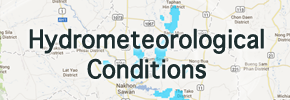ST2-W2
Climate change impact on surface water and groundwater recharge in Yom and Nan River Basin
- Complete the quasi real‐time simulation
- Connect simulation & observation
- Improve overall simulation performance (Particularly for the Nan River)
- Simulate flood inundation area as well
- Make system failure tolerant
- Develop water use models
- Irrigation water: calibration and validation
- Industrial/Domestic water: data collection and projections
- Deal with new issues
- Deforestation/Afforestation
- Building new reservoirs
- Enhancing retarding pond
Members
Thai Side
- Chaiwat EKKAWATPANIT – King Mongkut’s University of Technology Thonburi (KMUTT)
- Duangrudee KOSITGITTIWONG – King Mongkut’s University of Technology Thonburi (KMUTT)
- Weerayuth PRATOOMCHAI – Naresuan University (NU)
- Adisorn CHAMPATHONG – Royal Irrigation Department (RID)
- Thada SUKHAPUNNAPHAN – Royal Irrigation Department (RID)
- Jaray THONGDUANG – Royal Irrigation Department (RID)
- Somkid SAPAOKUM – Royal Irrigation Department (RID)
Japanese Side
- Naota HANASAKI – National Institute for Environmental Studies (NIES)
- Saritha PADIYEDATH GOPALAN – National Institute for Environmental Studies (NIES)
- Kumiko TAKATA – Azabu University (Azabu U)




